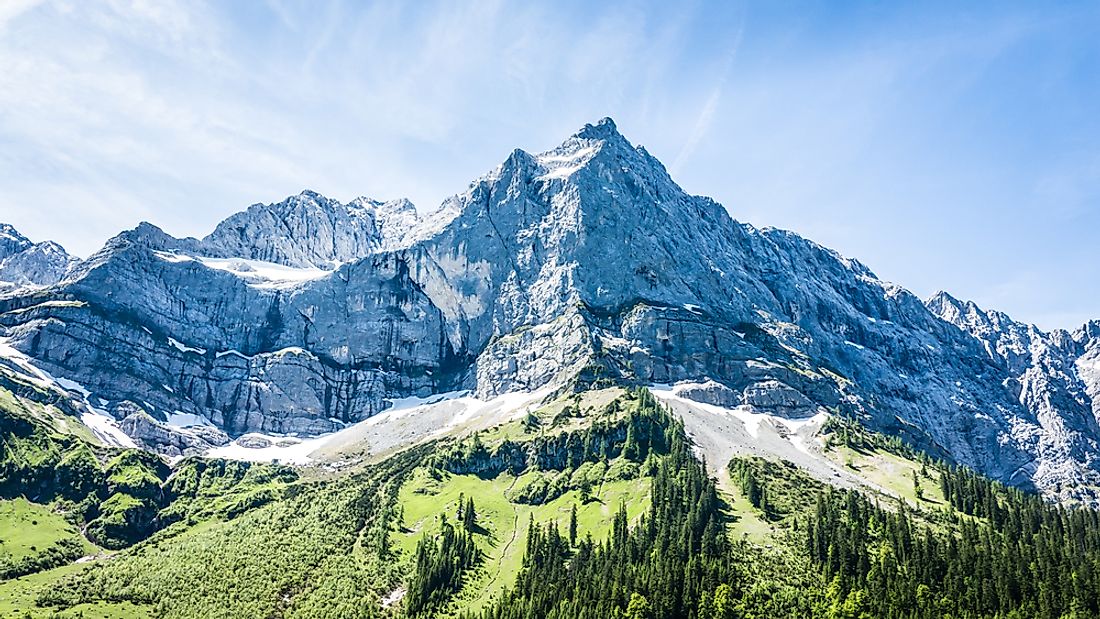What Are The Different Types Of Tree Lines?

A tree line is an ecological or geographical limit beyond which trees are not able to thrive and is manifested as a line. The tree line is evident in regions of extreme altitude such as on high mountains, or regions which experience extreme temperatures such as the Polar Regions or deserts. When observed from a distance, tree lines seem to be well-defined, but on the ground, the tree line is less evident and is gradual with trees becoming shorter and fewer in numbers as one moves away from the tree line. Tree lines are categorized either based on geography or ecology. Based on the two parameters, four main types of tree lines exist, and these are the Arctic tree line, the Desert tree line, the Alpine tree line, and the Antarctic tree line.
Alpine Tree Line
An alpine tree line is determined by altitude, and it marks the highest point at which trees can thrive. Conditions beyond the alpine tree line cannot sustain dense tree growth due to the low temperatures and long periods of snow cover. The alpine tree line is well-defined when observed at a distance. The alpine tree line appears on different altitudes on different locations since the latitude also affects the location of the alpine tree line. Vegetation beyond the alpine tree line is characterized by sparse tree growth which ultimately gives way to tundra vegetation featuring short grasses and few bushes.
Arctic Tree Line
As the name suggests, the Arctic tree line is the tree line found in the Arctic region and is defined as the latitude above which trees cannot exist. There are two reasons behind the existence of the Arctic tree line. First, the extreme cold temperatures found beyond the Arctic tree line make the existence of any type of trees impossible. Another reason is the permafrost found in the soil in regions near the North Pole makes it impossible for trees to make the roots penetrate deep enough to access necessary nutrients and water. The Arctic tree line is not defined by altitude and is usually found in regions of average altitude. The Arctic tree line can be found in the northern parts of Alaska, Canada, Norway, and Russia.
Antarctic Tree Line
The Antarctic tree line is defined as the southernmost latitude beyond which trees are incapable of thriving due to the cold temperatures. However, despite the name, there are no trees and therefore no tree lines on mainland Antarctica due to the extreme climatic conditions experienced on the continent. The few Antarctic tree lines are found on islands which surround the Antarctic including the Macquarie Island.
Desert Tree Line
The desert tree line marks the arid point which can support the growth of trees. On the opposite end of the temperature spectrum is the desert tree line which unlike the Arctic and Antarctic tree lines, is formed at the limit beyond which the high temperatures and low precipitation make it impossible for trees to grow. Vegetation beyond the desert tree line consists of small shrubs, hardy grasses, and bushes. Desert tree lines can be found in some of the world’s deserts.











